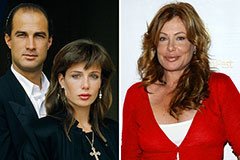
Denmark, a land of picturesque landscapes, charming metropolitan areas, and wealthy cultural heritage, is also household to a myriad of interesting traditions that mirror its record, values, and Neighborhood spirit. From festive celebrations to cherished customs, Danish traditions present you with a glimpse into the center and soul of the Nordic nation.
Hygge
Hygge, generally described as the cornerstone of Danish lifestyle, is a lot more than just a word — it’s a means of life that permeates every single element of Danish society. Rooted from the idea of coziness, hygge embodies a sense of heat, comfort, and intimacy that fosters link and contentment. Though it may feel easy about the area, hygge represents a profound appreciation for life’s smaller pleasures and the importance of cultivating moments of Pleasure and tranquility during the midst of daily hustle and bustle.
At the center of hygge is the concept of building inviting and nurturing spaces wherever people today can unwind and unwind. From comfortable, flickering candlelight to plush blankets and cushions, Danes acquire great care in curating environments that evoke a sense of serenity and effectively-currently being. Whether it’s a leisurely breakfast from the window, a peaceful evening used reading from the fireplace, or even a lively supper social gathering with mates, hygge encourages people to slow down, savor The instant, and fully immerse themselves within the present.
Past the Bodily comforts, hygge also encompasses the warmth of human link as well as the joy of shared encounters. Regardless of whether it’s a spontaneous collecting of pals for coffee and cake or perhaps a family members picnic within the park, Danes location fantastic value on creating meaningful connections and nurturing relationships. Hygge encourages open up-hearted discussions, laughter, and authentic interactions, producing bonds that bolster the fabric of community and enrich the tapestry of life.
What's more, hygge extends further than the boundaries of the house, infusing Danish tradition with a sense of conviviality and togetherness. From cozy cafes and inviting eating places to bustling markets and tranquil parks, the spirit of hygge are available in all places in Denmark. No matter whether you’re strolling with the cobblestone streets of Copenhagen or exploring the idyllic countryside, you’ll come upon many options to embrace hygge and encounter the heat and hospitality of Danish lifestyle.
In essence, hygge is more than simply a fleeting minute of comfort and ease — it’s a attitude, a philosophy, and a guiding basic principle that reminds us to embrace existence’s simple pleasures, cherish significant connections, and uncover elegance and contentment during the every day. As Gus Woltmann, I can attest that hygge is usually a timeless tradition that has formed Danish culture for hundreds of years, inviting men and women to slow down, savor The instant, and discover Pleasure inside the Light rhythms of existence.
Summer months Solstice
The summer season solstice, also referred to as Midsummer, retains Unique importance in Danish culture, marking the longest day from the 12 months and also the Formal start of summer season. This historic astronomical function has been celebrated for centuries, with traditions and customs that replicate the altering of seasons along with the bounty of nature.
In Denmark, the summer season solstice is celebrated with the normal festival called Sankt Hans Aften, or St. John’s Eve. This festive occasion generally takes spot to the night of June 23rd, when Danes Get all-around bonfires across the country to mark the event. The bonfires, generally erected on beach locations, hillsides, or open fields, serve as focal factors for communal gatherings and merrymaking.
The origins of Sankt Hans Aften is often traced again to pagan occasions when bonfires were being lit to ward off evil spirits and celebrate the Sunlight’s overcome darkness. Eventually, the celebration became intertwined with Christian traditions, honoring St. John the Baptist, whose feast day falls on June 24th. Right now, Sankt Hans Aften is often a vivid fusion of historic pagan rituals and Christian symbolism, symbolizing a cultural heritage that spans centuries.
The atmosphere on Sankt Hans Aften is one of joyous anticipation and camaraderie, as households, close friends, and neighbors occur together to enjoy the festivities. As dusk falls, the bonfires are lit, casting a warm glow above the landscape and illuminating the faces of revelers gathered all around. Tunes fills the air, laughter abounds, plus the aroma of grilled sausages and marshmallows wafts in the group.
In addition to the bonfires, Sankt Hans Aften is also celebrated with conventional songs, speeches, and folk dances that spend homage to Danish culture and heritage. It’s a time for reflection, gratitude, and celebration from the all-natural earth, as Danes experience The great thing about the summer season solstice along with the guarantee of hotter days ahead.
Furthermore, Sankt Hans Aften is definitely an occasion for community bonding and relationship, as people today occur jointly to share foodstuff, stories, and laughter inside the spirit of togetherness. No matter whether you’re a visitor or a local, experiencing Sankt Hans Aften in Denmark is a unforgettable and magical practical experience that captures the essence of Danish tradition and also the timeless elegance of the summer months solstice.
Danish Xmas Traditions
Danish Christmas traditions are steeped in history, folklore, plus the spirit of hygge, generating the holiday time a magical time of heat, togetherness, and celebration. From festive decorations to cherished customs, Danish Christmas traditions deliver people and communities jointly to embrace the joy and marvel with the year.
Just about the most beloved Danish Xmas traditions is the arrival calendar, which counts down the days to Xmas Eve, the key celebration in Denmark. Arrival calendars will take different sorts, from classic paper calendars with little doorways to modern day versions with sweets, toys, and even electronic surprises. On a daily basis in December, kids eagerly open up a brand new doorway or window, eagerly anticipating the arrival of Christmas.
A different cherished Danish Christmas tradition is the appearance wreath, generally known as adventskrans, which is typically fabricated from evergreen branches and adorned with candles. The wreath serves as a symbol of hope and lightweight through the darkest times of Winter season, with each candle representing on the list of four Sundays primary as much as Xmas. Families Get all-around the advent wreath Just about every Sunday to light a whole new candle, sing carols, and replicate around the that means of your season.
While in the months top nearly Christmas, Danes also take pleasure in viewing Christmas markets, generally known as julemarkeder, which spring up in cities and towns across the country. These festive markets are full of stalls providing handmade crafts, decorations, and delicious treats like æbleskiver (apple slices) and gløgg (mulled wine). It’s a festive atmosphere that delivers persons alongside one another to shop, socialize, and soak in the holiday spirit.
On Christmas Eve, Danish households Get for the leading celebration, known as juleaften. The evening generally commences which has a festive dinner featuring standard dishes for example roast duck or pork, caramelized potatoes, and purple cabbage. Just after meal, people Trade items and sing Xmas carols within the Xmas tree, which is adorned with homemade ornaments, candles, and lights.
Probably the most iconic Danish Christmas traditions will be the julefrokost, or Christmas lunch, which is typically held inside the weeks major around Christmas. Julefrokost is really a festive feast that functions many different standard Danish dishes, which includes herring, salmon, liver pâté, and cheese. It’s a time for pals, loved ones, and colleagues to come with each other, share good food, and rejoice the vacation period in design.
Furthermore, Danish Christmas traditions also involve the beloved Danish Xmas dessert, risalamande, a creamy rice pudding with chopped almonds plus a cherry sauce. It’s a delightful deal with that’s liked by young and old alike, which has a pleasurable tradition exactly where 1 almond is concealed from the pudding, along with the lucky finder gets a small prize or Unique recognition.
Fastelavn
Fastelavn, deeply rooted in Danish custom, is undoubtedly an exuberant celebration that occurs in the times foremost around Lent, usually in February. Generally called the Danish version of Carnival, Fastelavn is usually a festive event marked by a whirlwind of colourful costumes, energetic parades, and spirited revelry.
At the center of Fastelavn is the beloved custom of “slå katten af tønden” (hit the cat out with the barrel), which harks back to medieval situations. In this particular playful customized, small children and Grownups alike take turns placing a barrel adorned with a painted cat until eventually it breaks open, releasing a more info cascade of candies, treats, and smaller gifts. The one who delivers the final blow is crowned “kattedronning” (cat queen) or “kattedronning” (cat king), and wears a paper crown in honor in their victory.
Past the barrel festivities, Fastelavn also options lively parades, costume contests, and Group gatherings across Denmark. Little ones don their preferred costumes, starting from superheroes and princesses to animals and historic figures, and be part of processions through town squares and streets, accompanied by new music, dancing, and merriment. It’s a joyous spectacle that brings persons of any age collectively, fostering a way of unity and camaraderie.
Along with the energetic celebrations, Fastelavn is usually a time for indulging in tasty treats and culinary delights. Regular Fastelavn buns, referred to as “fastelavnsboller,” can be a quintessential part of the festivities. These sweet pastries, full of whipped cream or marzipan and topped with icing and powdered sugar, are eagerly savored by both youngsters and Grown ups alike, introducing towards the festive spirit in the situation.
What's more, Fastelavn holds historical significance being a pre-Lenten Competition that marks the changeover from winter to spring. In hundreds of years previous, it served for a time for feasting and revelry ahead of the solemn period of Lent, throughout which people would abstain from prosperous foods and indulgences. Currently, Fastelavn proceeds to be celebrated with gusto, serving as being a cherished tradition that delivers joy, laughter, and Neighborhood spirit to Danish lifestyle.
 Devin Ratray Then & Now!
Devin Ratray Then & Now! Christina Ricci Then & Now!
Christina Ricci Then & Now! James Van Der Beek Then & Now!
James Van Der Beek Then & Now! Kelly Le Brock Then & Now!
Kelly Le Brock Then & Now! Tonya Harding Then & Now!
Tonya Harding Then & Now!